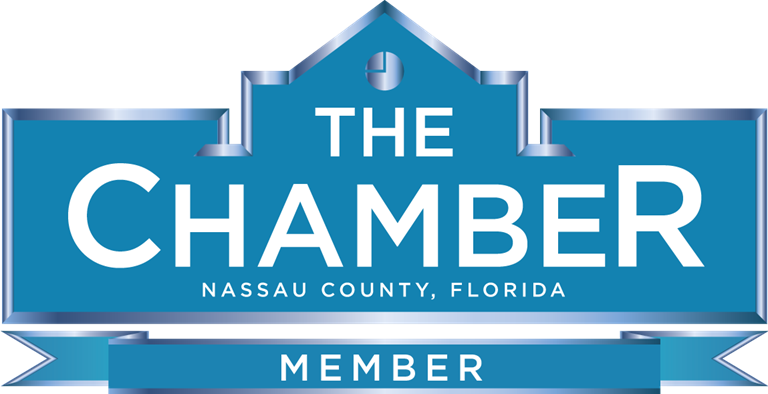Tax laws will change in 2026. Are you ready?

The Tax Cuts and Jobs Act of 2017 (TCJA) made many changes to U.S. tax laws. However, some of those changes included sunset provisions that will cause them to expire at the stroke of midnight on January 1, 2026, unless Congress acts to extend them. For today’s retirees, these changes will have significant impact. The three key components of the TCJA that will impact retirees in 2026 are going to be the changes pertaining to income-tax, estate taxes, and gift taxing. Here is a breakdown for you.
Not only can Americans expect standard income tax deductions to be reduced, but the upcoming changes to the marginal tax rates will also have an impact. The short explanation of the marginal tax rates is that as your income increases, you move up through the brackets. Under the TCJA of 2017, the tax rates in force today are 10%, 12%, 22%, 24%, 32%, 35%, and 37%. On January 1, 2026, the rates return to their pre-TCJA amounts of 10%, 15%, 25%, 28%, 33%, 35%, and 39.6%. The income brackets to which those rates apply will also be different and will continue to be adjusted for inflation each year going forward. Additionally, some people who have used estate and gift tax exemptions in the past can expect those exemptions to be cut almost in half in 2026.
An increase to tax-brackets creates some additional pain for all of us, but even in today’s current tax climate and without considering these anticipated changes, many retirees are already finding their taxes increasing in retirement. You may be asking, “How is this possible?” as it’s contrary to what you’d expect. Let us explain.
First, a retiree is likely to experience a loss in deductions due to less or no contributions to retirement accounts, no work or childcare expenses, and oftentimes no mortgage payments. Furthermore, many retirees have the bulk of their savings in a pre-tax environment, such as an IRA or 401K account, so when they start pulling income from these accounts that means more taxes due. This can often be a factor for someone to consider when turning age 73, which is the age a retiree must begin taking Required Minimum Distributions (RMDs) from their retirement accounts. Even if they don’t need the income, they are required to take a taxable withdrawal, which can increase taxable income and sometimes bump you up a tax bracket.
Another problem that some retirees unfortunately face, is that when one spouse passes away, the tax disparities become even greater. Although the “household” income will be the same or less without the second spouse, oftentimes the single filing person will be taxed more than they would have been under married-filing-jointly status. This will be even more of a problem when the brackets change in 2026. It will be important for a widowed spouse to see which new bracket they will now fall into and how much of an increase they may experience.
When people consider possible risks to their retirement nest egg, they most often think of investment risk (ie. market losses) and inflation. As we’ve described though, future taxes can also present a significant risk. So, if the old saying is true, “the two sure things in life are death and taxes”, what can be done about it? At Summerlin Benefits Consulting we’ve got a great option that can help you save on taxes, keeping that money in your pocket. The financial vehicle we’re referring to here, is called Fixed Indexed Universal Life (FIUL).
Now, please don’t stop reading right there because we’ve mentioned the dreaded term “life insurance”. Hear us out on this one and you might be pleasantly surprised by how this financial vehicle is often used to help clients reduce tax obligations in their future!
FIUL policies are funded with an initial payment, or several smaller payments over the first few years of the policy. From there on out your cash (ie. “premium”) deposits into your FIUL policy grow tax-free and earn a reasonable rate of return over time. You’ll see higher earnings on market up-years but will not lose on down-years; your money is protected. You’ll also have access to penalty-free withdrawals from your cash value after the first year of the policy, should you need it.
For the purpose of growing your cash value, the best FIUL policies have low fees/charges and are max funded. Typically, the cost structure of an FIUL policy is set up so that your costs are highest in the beginning years when you have less money in the policy and then tend to go down over time. When structured correctly, FIUL can be designed to carry less fees overall throughout the lifetime of the policy than many other types of investment vehicles.
Additionally, you’d want a FIUL policy that offers “living” benefits as well as a death benefit. FIUL can not only provide you with tax-free income in retirement but can also help pay for long term care tax-free as well; should you need it in your future. Most people age 65 and older will have at least one “long term care event” during their retirement years, and that is usually when cost of living can sky-rocket for a retiree. The long-term care benefits offered from your FIUL policy can be invaluable during that time. Let’s think about this further… imagine, having to pull much larger amounts of money from your IRA’s every year to pay for long term care costs. Not only would you be depleting your retirement savings at a faster rate during that time but it would also increase your taxable income, possibly even bumping you up a tax-bracket. Now imagine being able to, instead, pull that extra income from your FIUL’s death benefit, while you are still living. Not only does this protect your retirement savings but it will keep taxes down, since life insurance benefits are paid out completely tax-free! This can be a game changer later in life, especially for higher net-worth, higher taxed individuals.
You may be thinking, “This all sounds good, but how do I find out if it’s right for me?” The next step to finding out whether you will qualify for a FIUL policy would be to work with a licensed professional who specializes in this strategy, so that they can help you find the right FIUL policy for your specific needs. There will be some health questions and underwriting to go through but now is definitely a good time to look at this, in case you want to try to transition some of your current pre-tax retirement savings into a tax-free environment before the TCJA laws change in 2026.
At Summerlin Benefits Consulting, we have a team of licensed professionals who specialize in retirement income strategies, helping people mitigate taxes in retirement, preparing for future long term care expenses, and how to best use FIUL for these purposes. We can help guide you through the process in a simple and easy-to-understand manner. Let’s get you started on the road to a tax-free income in retirement and a tax-free legacy for your loved ones!

Helping You Protect Your Money. Helping You Protect Your Future.
Our Hours
Monday: 8:30 AM - 4:30 PM
Tuesday: 8:30 AM - 4:30 PM
Wednesday: 8:30 AM - 4:30 PM
Thursday: 8:30 AM - 4:30 PM
Mon-Thurs: Closed 12:00-12:30 PM for lunch
Friday: 8:30 AM - 1:30 PM
Saturday & Sunday: Closed
All Rights Reserved | Summerlin Benefits Consulting. Website by BizBolster Web Solutions, LLC.
This site is for informational purposes only and is not intended to be a solicitation for or offering of any product or investment. By using this website, you accept our Terms of Use and Privacy Policy. Summerlin Benefits Consulting Inc’s insurance services and the investment advisory services provided by GWM (dba SBC Wealth Management) are available only to residents of the United States in jurisdictions where these firms are licensed and/or registered. Nothing on this website should be considered an offer, solicitation of an offer, or advice to buy or sell securities. Any historical returns, expected returns, or probability projections are hypothetical in nature and may not reflect actual future performance. This website may contain concepts that have legal, accounting and tax implications. We do not provide specific legal or tax advice, nor promote, market or recommend any tax plan or arrangement. Consult a tax/legal professional for guidance with your individual situation.
The content on this website does not constitute a complete description of services provided. Before investing, consider your investment objectives and any applicable fees. SBC Wealth Management, GWM, and Summerlin Benefits Consulting Inc. are not banks or depository institutions licensed in any jurisdiction. Products offered by Summerlin Benefits Consulting Inc. and GWM (dba SBC Wealth Management) are Not FDIC Insured, Not Bank Guaranteed, and May Lose Value. All product and company names are trademarks™ or registered® trademarks of their respective holders. Use of them does not imply any affiliation with or endorsement.





